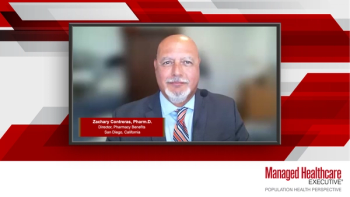
Developments in HIV Prophylaxis: New PrEP Options
An overview of HIV PrEP therapies in the pipeline and their potential roles as they are introduced into the community for use among high-risk populations.
Episodes in this series

Moti Ramgopal, MD, FACP, FIDSA: I’m involved in clinical research, and it’s always fascinating and exciting to be involved in projects that you won’t hear about for another year to 2 years from now, but we are moving quite rapidly into the PrEP [pre-exposure prophylaxis] world. Prior to this conversation, we have Truvada, we have Descovy, and we’ll have an injectable PrEP pretty soon. This will be an injection every 2 months for PrEP. Apart from that, what’s also in the pipeline? We’ll have probably weekly pills, monthly pills, 6-monthly injections of PrEP, PrEP implants. And then for women, there are also going to be intravaginal rings for PrEP.
There are a lot of these agents, so to speak, or new modules of treatment or new medications involving treatment that will be rolling out soon. I think this is going to be good because a lot of time people will start PrEP, stop PrEP. If you have an injectable PrEP that stays in your system up to 2 months, you get a shot today, 2 months there or even longer, and you have a 6-month PrEP, I really do believe these new agents will be game changers. It’s not about taking a pill every day anymore. It’s about knowing full well that you’re protected against HIV by having an injectable agent in your system. That’s going to protect you for several months at a time.
Once we get there, I really truly believe once the access issues have been addressed, once we recognize—of course, you’re going to hear, “Well, you’re implanting some slow-release product.” That could be a challenge because we’ve seen the challenge with COVID-19 vaccines, or even if you give an injection. But I do believe that the patients involved in HIV care, what I’ve seen is that they’re more in tune with understanding medical care and what’s developing. They’re looking forward to these new strategies. And again, just to remind you what these strategies are, long-acting pills once a week, or probably once a month, long-acting injections every 2 months, probably every 6 months, vaginal rings, and implants that can stay in your system for quite a while.
Ryan Bitton, PharmD, MBA: As far as the long-acting agents in the pipeline and the potential barriers and logistical concerns surrounding those products, I’m not sure that there’s a huge worry as far as logistical concerns. When you have medical benefit provider–administered products, that does introduce logistical issues because those products need to be shipped to the provider’s office versus being picked up from the pharmacy or being shipped to the member’s home. There are some considerations there, but I think as a health care system, we’ve ironed that out. But it is more complicated than taking a prescription to the pharmacy. With the long-acting agents that may be self-administered, I think there are fewer logistical issues. The worry then is, it’s not a daily administration, potentially, therefore adherence becomes more of an issue because if you miss your dose, whether weekly or monthly, it becomes a bigger issue than if you miss just 1 day. I think those are the logistical concerns, but I don’t think either of those are insurmountable. I think having options that are long-acting that provide better options for adherence are going to be a boon for the patients and for the HIV PrEP community.
For how we overcome the challenges with the medical benefit, the logistical concerns from a provider perspective, I think over time, the introduction of specialty pharmacies into this buy-and-bill medical adjudication, distribution perspective has helped. It used to be that if providers were going to administer something, it had to be buy-and-bill. Sometimes providers don’t want to get involved in having overhead and the complicated aspects there, but now with specialty pharmacies being able to be involved, bill medically, and then ship the product to the provider office, I think that has helped. The PrEP therapy would come from the specialty pharmacy with the patient’s name on it, and it says, OK, this is here for patient A when patient A comes in to get their administration. I think that prevents them from having the overhead of stocking these things. That’s been one helpful tool, because that was one of the big barriers, that not every provider wanted to go through that.
Transcript edited for clarity.
Newsletter
Get the latest industry news, event updates, and more from Managed healthcare Executive.

























































